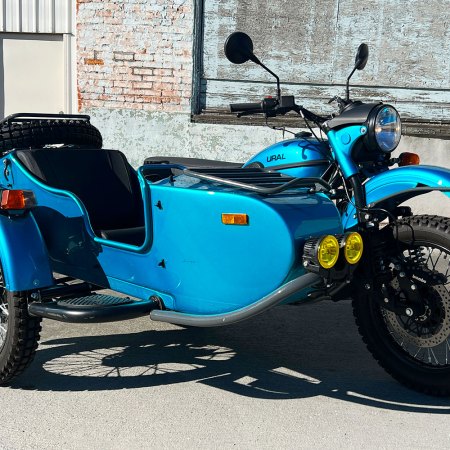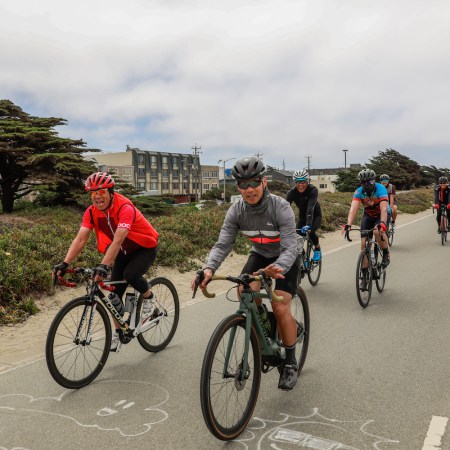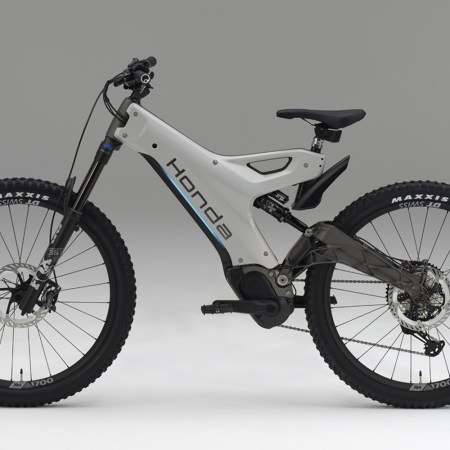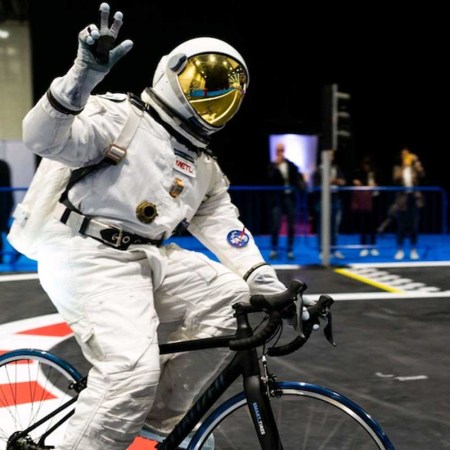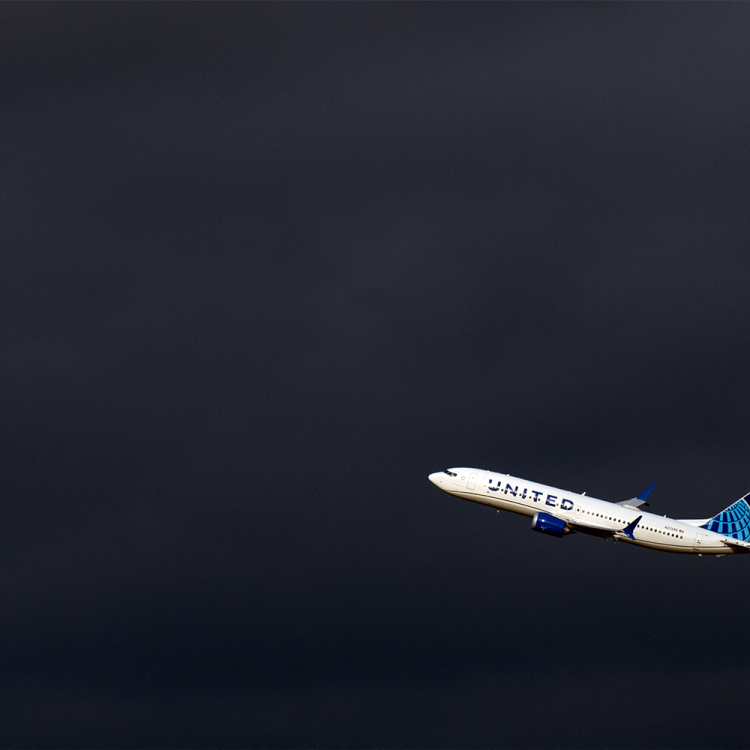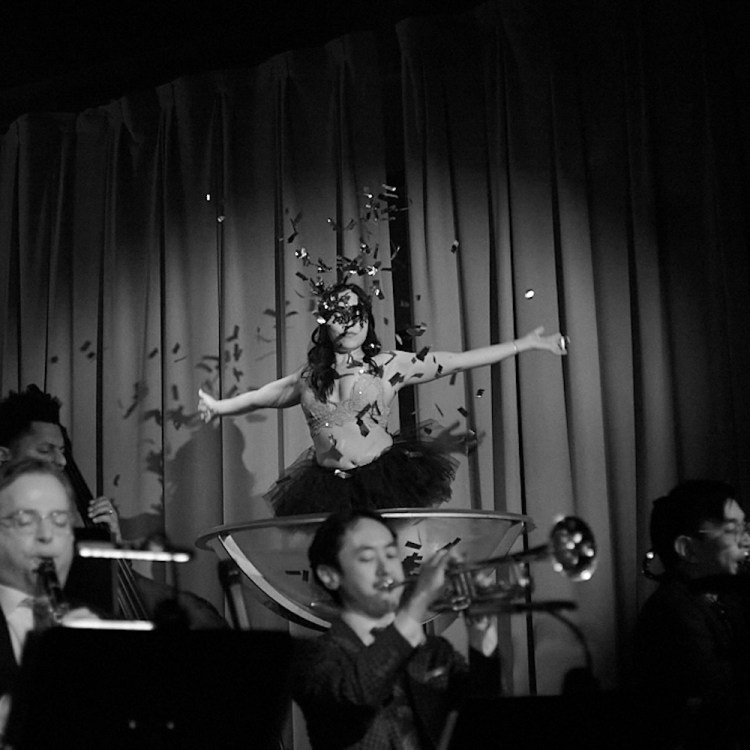“It beats running on a treadmill.”
That’s Aaron Stinner, avid cyclist, on the merits of cycling.
“I like being able to be outside and go where I want to go. That kind of freedom is pretty awesome.”
Stinner also hand-makes bicycles out of a workshop in Goletta: about 200 a year, each of them custom, under the trade name Stinner Frameworks.
Stinner makes five styles of bikes: two road bikes, two crossovers and one mountain. Most of their customers — the dictionary definition of bike geeks, by and large — buy the frame only and assemble on their own. But they do offer complete builds, and have hundreds of different color combinations, so feel free to go wild.
We recently paid Aaron a visit to see these stunning two-wheelers in the flesh, and stayed a while to chat about his work, how to pick a good frame and where he’ll be riding this summer.
InsideHook: How did you get into making bicycles?
Aaron Stinner: I started working in shops when I was 13. Cycling is a very expensive sport. You’re trying to convince your mom this is a cool thing to do. And she’s like, “Yeah, that’s great. But these bikes are costing three or four thousand dollars. Soccer costs, like, 100 bucks.” Working in the shop, I was kind of like, “Well I gotta pay for tires and tubes and these bike parts.” So I was just working for bike parts so that I could do the racing.
IH: What was the first bike you bought with your own money?
AS: It was a teal Lemond Zurich. That was the model name, and it was my first road bike that I got and parted out. I raced on that thing for quite a few years. It was an awesome bike. It’s funny. Back then, obviously I would have never guessed that I would be doing what I’m doing today. My first bike being a steel bike and then kind of like, getting into the world of frame-building. And now building similar bikes to what that one was back then. That was probably in ’95, ’94 … somewhere in there.
IH: Where did you learn to actually build a frame from scratch?
AS: To get a little better knowledge on why bikes are built the way they are, I took UBI’s framebuilding class. This was at the beginning of 2010. Took the class, built a frame, came home and my friends found out that I can build. Slowly but surely, I started to build more. I didn’t really start doing it full time until about 2012. We were doing this out of my garage. Now we’re in a space, which we share with a wheel builder.
IH: Do all the materials come from California as well?
AS: All of our machine parts come from California. We try to source as much as we can from California. Our tubing, which obviously is a big portion of it, all comes from Italy. Our titanium comes from the U.S., some of it from Canada. So it’s a mix.
IH: Design-wise, what do you find appealing about a bicycle?
AS: You kind of have a box you do have to stay in. My design is very clean and modern. I try not to get too crazy with stuff. I think simplicity has more challenges than people think. A lot of people do it to try to make these ornate structures that have some sort of technical advantage. I think a bicycle in its simplest form is actually one of the most efficient forms of transportation and moving around. So I stick with a classic design, but add parts that I think emphasize or increase the ride quality and the experience that you’re going to have on that bike.
IH: Let’s say I’m getting into biking, and I’m kind of tossed-up between riding on the road and riding on trails. Where do I start? Which bike would you put me on?
AS: We do get a lot of that. Right now, gravel riding and mixed terrain is the hot ticket — bikepacking and overnighters and all that stuff. We have our Gibraltar, which is our road model, and then we have our Refugio, which is the gravel-and-monster cross. The Refugio is a 50/50 bike: you could spend 50 percent of your day on gravel and 50 percent of your time on the road and be pretty comfortable. It’s also more of a long-distance rider, so if you’re doing more hard-packed dirt, the Refugio is going to be your go-to.
Then there’s the Romero, which is more of a drop-bar mountain bike. So definitely something that you wanna take on rugged terrain. You’re probably not going to be moving as fast. You wouldn’t want to do a big 100-mile ride on that one.
IH: If you could cut out of work early right now, where would you bike?
AS: My favorite ride in Santa Barbara is Camino Cielo. The Tour of California just went up it — it’s a pretty big climb here in town. You get to the top of Gibraltar Road and you can ride across the ridge line, which is called Camino Cielo. You ride across the top of that, and then you drop down 154. That’s my favorite go-to if I have three hours left to ride.
IH: And if you could cut out and leave for the whole weekend, where would you go? A weekend ride, if you will.
AS: That’s a good question. Being in the Southwest, we’re pretty lucky. If I had a long three-day weekend and no other responsibilities, somewhere like Lodi would be amazing. I’m also kind of a homebody. So stopping in San Luis Obispo, and even the stuff here in the backcountry of Santa Barbara, makes for great solid mountain biking and gravel riding. If all the trails were back open — we lost a bunch of stuff in the fire and flood — we love riding stuff like Romero Canyon. In the backcountry, Montaña de Oro up in San Luis is amazing. Those three are beyond my quick-and-easy list.
IH: And if you could go for the week, where would you go?
AS: Last time I had a week off, we actually rode down the coast of California. So we started all the way up at the Oregon border, and then rode The 1 all the way back down. It was a bucket-list ride. I’ll never forget it.
We were doing semi self-supported, so we had one person in a car that was leapfrogging, or one person would take a day off and then drive. But we were doing around 150-175 miles a day. It was a good group, and we were kind of attacking it. We had sections marked out, but again, I come from a competitive background. I’m not a huge bikepacker guy. You won’t find me loading up my bike with 75 pounds worth of gear and rolling around at eight miles an hour. That’s just not my jam. We had a lot of stuff marked out, like coffee shops, and we’d stop, grab an espresso and then keep rolling. But yeah, we made headway, did it in five days, six with travel. We were motoring.
This article was featured in the InsideHook LA newsletter. Sign up now for more from the Southland.
